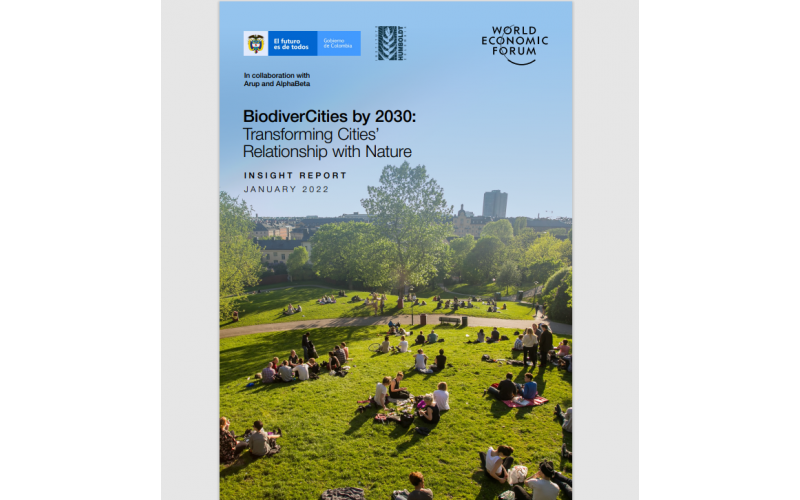The World Economic Forum with the Government of Colombia, the Humboldt, Arup and AlphaBeta, has released this insight report to call on cities, as crucial players in reversing nature loss and climate change, to become BiodiverCities by 2030. The report showcases the opportunity for urban leaders and citizens to transform their cities’ relationship with nature through nine key messages.
1. The begin of an “urban era”. Indeed, cities account for 80% of global GDP and will host 75% of the world’s population by 2050.
2. The exponential growth of construction and urbanization undermines the contributions of nature to our societies. It is estimated that 44% of global GDP in cities is at risk of disruption due to the loss of nature.
3. BiodiverCities by 2030 defines a vision of cities as living systems, guiding positive actions for nature on infrastructure, governance, economy, health and well-being.
4. Cities can build a climate-resilient built environment by reducing their impact on biodiversity through nature-based solutions (NbS). Nbs are, on average, 50% cheaper than "gray" alternatives and offer 28% more value, but in 2021 they received only 0.3% of the total expenditure on urban infrastructure.
5. The expansion of nature into the built environment could create over 59 million jobs by 2030.
6. The impact of cities' natural positive actions varies by sector, region and level of urbanization.
7. One of the three conditions for achieving the BiodiverCities vision is the transition to a systemic approach in urban governance.
8. The second condition is the restoration of nature as a top priority in urban planning.
9. The third condition is an increase in investment in natural capital to unlock the benefits of NbS.

